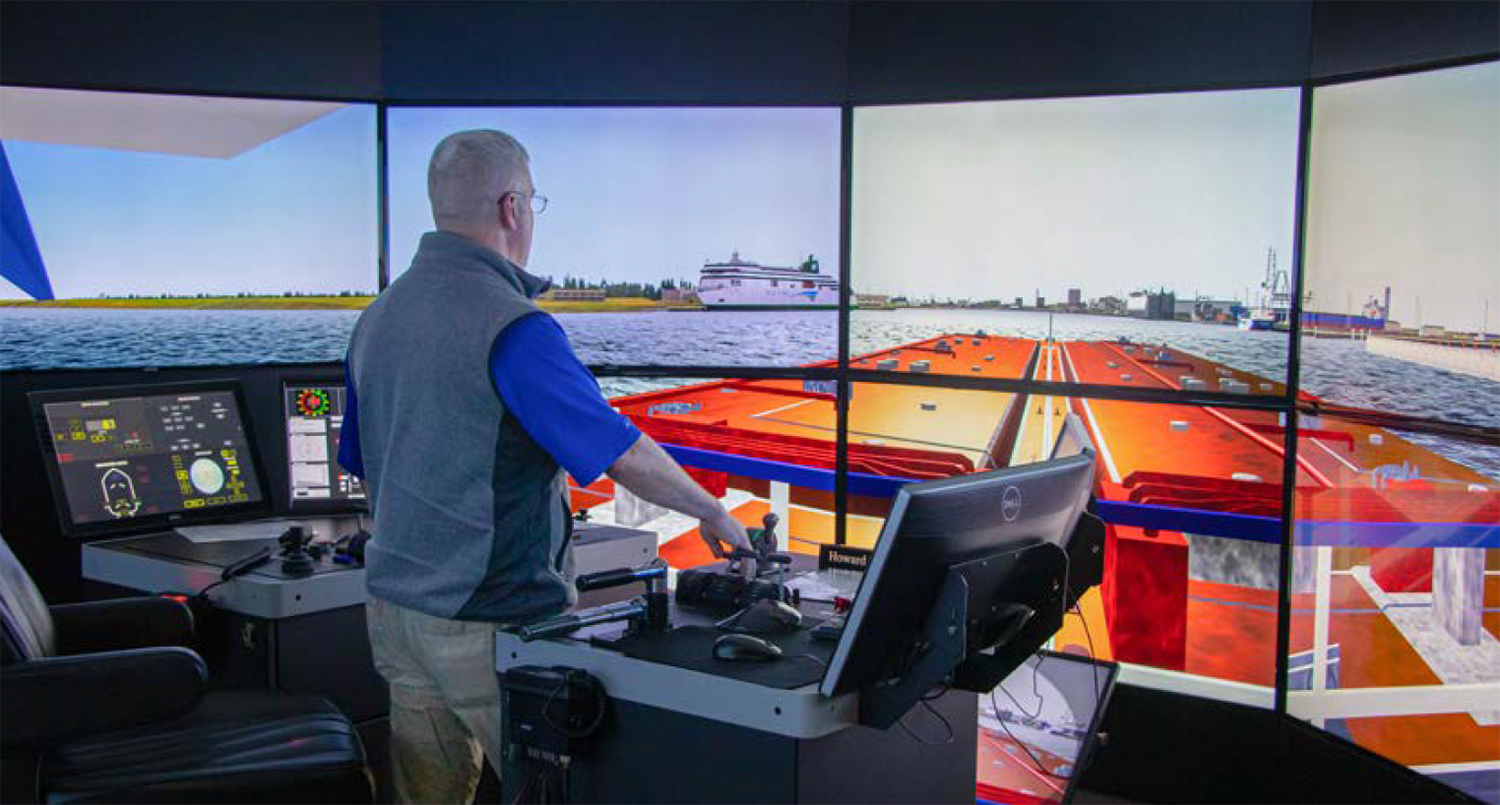Rules of the Road

Video training for all mariners – anytime, anywhere.

In 2022, the Seamen’s Church Institute’s (SCI) Center for Maritime Education (CME) launched Rules of the Road, a series of short video-based training modules designed to disseminate maritime knowledge. The initial focus was on legal obligations but has expanded to encompass vessel and radar operations. The driving force behind these modules lies in recognizing the limitations of traditional classroom-based maritime education. Classroom learning restricts the number of attendees, requires the onsite presence of instructors, and is confined to a particular time and place. These constraints hinder scalability and accessibility. It became clear that accessibility to asynchronous learning resources was required to meet the evolving needs of maritime operators, especially after the COVID-19 pandemic. CME’s Rules of the Road project was designed to do just that.
While Rules of the Road training modules can stand alone, the focus has always been a blended learning approach—combining the strengths of classroom instruction with the versatility of video-based content. By capturing expert knowledge and presenting it clearly and succinctly in video format, SCI aimed to reach a broader audience without the limitations of physical spaces or time constraints.

“One of the key features of this project,” noted Capt. Stephen Polk, Director of SCI’s Center for Maritime Education, “was the incorporation of objectives, not only comprehensive training content but also post-module reviews and tests. This offers opportunities for reinforcement. To me, it’s a natural progression, or enhancement, of classroom and simulator learning.”
–
But for CME, Rules of the Road represents more than instructional videos. With every video, CME has a chance to innovate and customize experiences by leveraging its simulator database, building highly realistic scenarios to illustrate critical lessons and concepts. With topographical data and ship models, CME can construct hyper-accurate scenarios that mirror those encountered on the water. This provides mariners with a virtual platform to address situations, apply their knowledge, and hone their skills. “For our videos and our blended learning, our database allows us to look at incidents from any angle, change the weather or time of day, or even test various locations,” said Polk. “This flexibility empowers us to cater to the diverse needs of various maritime operators and professional mariners whether they be new hires, steersmen in training, or seasoned masters.”
The current collection of Rules of the Road videos comprises 17 modules, commencing with legal obligations completed last fall and concluding with the most recent addition covering various aspects of vessel and radar operations. However, it’s important to note that there is potential for expansion. Captain Polk states, “At CME, we highly value the feedback and insights of experienced mariners who participate in our training programs, as their suggestions may catalyze new module ideas. We’re committed to bringing these ideas to fruition if it’s within our capacity.” Through the fusion of the most effective elements of traditional classroom instruction and the realism offered by simulator-based learning, CME’s Rules of the Road modules have emerged as a substantial educational resource for mariners. They complement existing training and classroom experiences or can be conveniently accessed by mariners, regardless of location or time, whether on the job or at home.
Article from the 2023 Fall Lookout Magazine.
Rules of the Road modules can be purchased through the Center for Maritime Education: Tel.: 713.674.1236 Email: [email protected].
The Rules of the Road are important video lessons for all mariners, as everyone’s safety on the water depends on our common understanding of the rules as they are written, and not the rules based on personal interpretation. Course content is listed below:
- Module 1 | Intro: The Navigation Rules— Purpose and Architecture
- Module 2 | Rules 1 & 3: The Navigation Rules—Application and Definitions
- Module 3 | The Pennsylvania Rule: Understanding Non-Compliance Rules
- Module 4 | Rule 2: The Navigation Rules—Responsibility
- Module 5 | Rule 5: The Navigation Rules—Lookout
- Module 6 | Rule 6: The Navigation Rules—Safe Speed
- Module 7 | Rule 7: The Navigation Rules—Risk of Collision
- Module 8 | Rule 8: The Navigation Rules—Action to Avoid
- Module 9 | Rule 9: The Navigation Rules—Narrow Channels
- Module 10 | Rule 13: The Navigation Rules—Overtaking Situations
- Module 11 | Rule 14: The Navigation Rules—Head-On Situations
- Module 12 | Rule 15: The Navigation Rules–Crossing Situations
- Module 13 | Rule 16: The Navigation Rules—Action by Give-way Vessel
- Module 14 | Rule 17: The Navigation Rules—Action by Stand-On Vessel
- Module 15 | Rule 19: The Navigation Rules-Conduct of Vessels in Restricted Visibility
- Module 16 | Rule 34: The Navigation Rules-Maneuvering and Warning Signals
- Module 17 | Radar Adjustments
